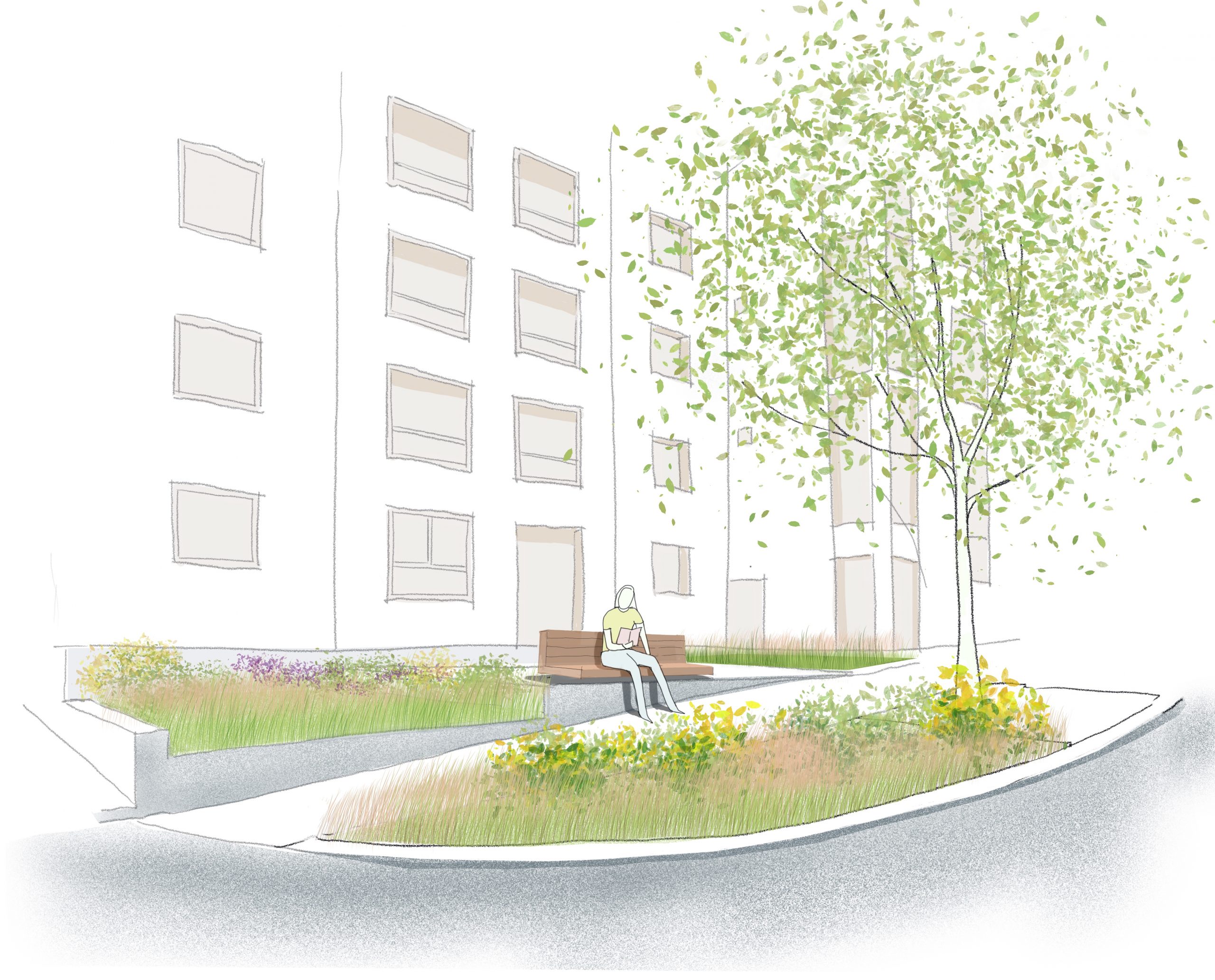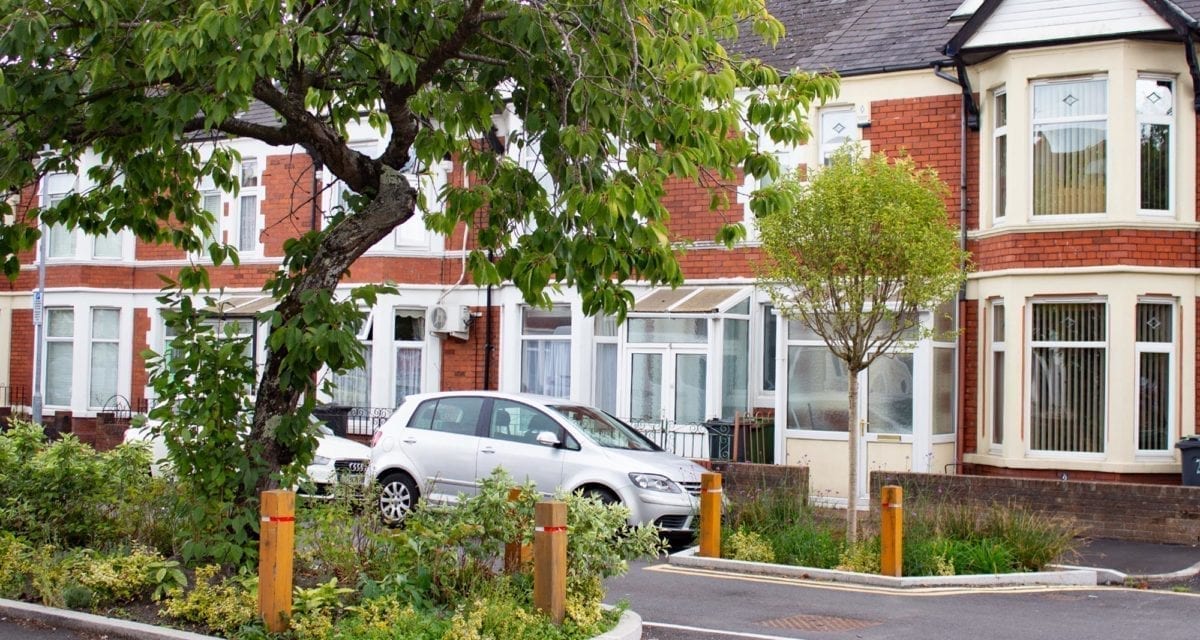Key Opportunity 1: Managing flood risk in Cherwell’s urban areas
Illustration of a street-side rain garden

Purpose
Slow and filter rain water by ‘depaving’ and creating rain gardens in urbanised areas.
Description
Depaving involves removing sections of hard paving, such as concrete and tarmac. This is then replaced with a permeable surface such as gravel or soil.
Rain gardens are a tool for slowing and filtering rainwater around our homes, community spaces, schools, car parks etc. Once captured, water is stored and slowly released into watercourses or sewers – either via the ground, by ‘evapotranspiration’ from plants, or other storage methods. These types of features are often referred to as Sustainable Drainage (SuDS).
Why is this important for Cherwell?
Drainage systems (particularly in older towns) can struggle to manage surface water runoff sustainably. This becomes more severe as the residential population, roads and hard surfacing increases.
Hard surfaces like rooves, tarmac and paving slabs block water from filtering into the soil, directing increased volumes of water into the sewer system.
In some areas there are combined sewers (where a combination of rainfall, foul drainage, and sometimes streams, flow within the same pipes). This pushes a much greater volume of water through the sewage treatment works and can lead to them struggling to cope in periods of high rainfall, leading to river and sea pollution.
Beyond flood risk alone, most wildlife also finds it hard to make a home in these hard surfaces. A rain garden can enhance local wildlife connections and biodiversity. Nature-based solutions to flooding such as these are a key priority for Cherwell, given the significant level of projected development and the likelihood of climate change to exacerbate existing flooding challenges.
Case study: Greener Grangetown
Greener Grangetown (Cardiff) is an example of a residential neighbourhood that has successfully “depaved” and installed attractive rain gardens, kerbside greenery and tree planting. The project was led by a partnership between Cardiff Council, Welsh Water and Natural Resources Wales.
Image source: GreenBlue Urban

Delivery guidance
In any given location, additional work will be required to identify the specific locations where targeted rain gardens would provide best value. This process should be data-led. It can draw on existing data from Thames Water along with other data sets. This process should begin by identifying locations of sewer overflow, areas of impermeable land within sub-catchments, and areas at risk of surface water flooding.
It should also be noted that depaving will only work where the soil characteristics allow. Soil permeability and contamination issues may mean that it is necessary to use permeable pavement system or other solutions.
Once these features are installed, regular but low-level maintenance is required to ensure the rain garden is functioning effectively. This includes:
- Ensuring water can flow freely into the rain garden and also from the outflow, without eroding the soil. Debris can be easily washed in and should be regularly ‘litter’ picked.
- Trees and plants within the rain garden require checking to ensure the wet conditions are suitable, and regular weeding needs to be undertaken to prevent any invasives becoming established or other species dominating.
Key delivery partners
- Developers (see Developer Checklist)
- Thames Water
- Environment Agency
- Oxfordshire County Council
- Local businesses
- Parish/Town Councils
Potential delivery mechanisms
- Designed into new development (see Guidance for new development).
- Thames Water ongoing capital programmes.
- Integration into high street regeneration programmes.
- Business Improvement Districts (BIDs).